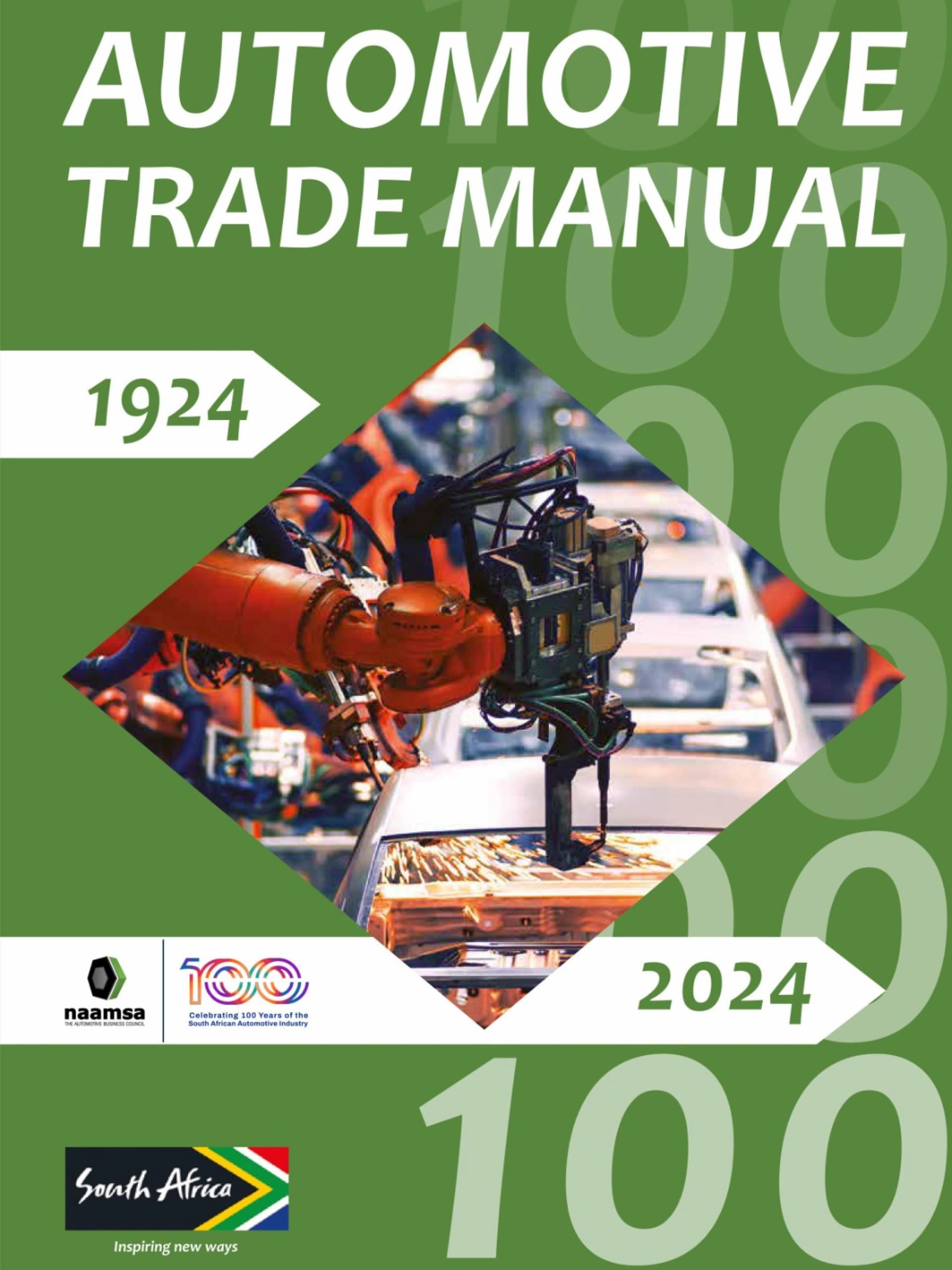The Automotive Business Council (naamsa) released its newly branded Automotive Trade Manual 2024 publication, previously published by naamsa under the banner of the Automotive Industry Export Council.
Mikel Mabasa, naamsa CEO, says the publishing of the manual is kicks off the centenary celebrations of the automotive industry in South Africa, dating back to 1924 when the first Model T Fords were locally produced in Gqeberha.
The new Automotive Trade Manual is the official source of key trade data and other information relevant to the automotive industry in South Africa and a summary of it was presented by Dr Normal Lamprecht, naamsa’s Chief Trade & Research Officer at the launch of the Automotive Trade Manual.
In 2023, the impact of slowing global growth owing to escalating geopolitical tensions, supply chain disruptions, inflationary pressures and multi-year high interest rates has reverberated across all sectors of the economy, including the automotive sector.
However, despite a constrained economic environment undermining the domestic new vehicle market’s ability to fully recover to pre-pandemic levels in 2023, record high vehicle exports ensured that the automotive industry outperformed the rest of the manufacturing sector.
Exports:
Some interesting statistics relating to the stance of automotive industry during 2023, show that the export value of vehicles and automotive components increased by R43.5 billion, or 19.1%, from the R227.3 billion in 2022 to a record R270.8 billion in 2023, comprising 14.7% of total South African exports.
Vehicle exports increased by 47 809 units to a record 399 594 units in 2023, up from the 351 785 units exported in 2022, while the vehicle export value increased by R46.9 billion from R157 billion in 2022 to a record R203.9 billion in 2023.
The industry’s impressive export performance also includes record exports to all major regions, including the EU, Africa, SADC and North America, while exports to 87 of the 148 country destinations were at an all-time high.
In 2023, there were no fewer than 46 passenger car brands and 2 172 model derivatives, the greatest selection of market-size ratio found globally. Similarly, in the light commercial vehicle segment, for the same period, there were 23 brands, with 525 model derivatives to choose from.
New Energy Vehicles:
Sales of battery electric vehicles increased to 929 units in 2023, up from 502 units in 2022, but the segment remained stymied by the lack of more affordable models. NEV sales share, by 21 brands, as a percentage of total new vehicle sales, breached the 1% mark in 2023, increasing to 1.45%, up from 0.88% in 2022.
It was also said that South Africa will have to realign its manufacturing strategy with that of the different OEMs as the production of ICE vehicles will come to an end in Europe around 2035. As most of the important minerals used in the new energy vehicles are available in South Africa, it puts the country in a good position for the NEV future.
Catalytic converters remain the top automotive component exported from South Africa and comprised R25.9 billion, or 44.1% of total automotive component exports, followed by engine parts, tyres and transmission shafts and cranks.
Imports:
Imports of light vehicles declined by 27 966 units, or 8.6%, from 323 783 units in 2022 to 295 817 units in 2023 in line with a weak domestic new vehicle market. The top country of origin, in terms of volume, for passenger cars and LCVs imported into South Africa in 2023, was India, with 157 326 vehicles, accounting for 53.2% of the total number of light vehicles imported. China consolidated its second position, accounting for 13.3%.
On the Global front:
Global vehicle production increased by 10.3% to reach 93.5 million vehicles in 2023, up from the 84.8 million units produced in 2022, exceeding the pre-pandemic level of 91.9 million vehicles in 2019. Vehicle production reflected double-digit increases in all major regions in 2023, except for the America’s region.
Eighteen countries exceeded the one million vehicle production mark in 2023, which is regarded as the international benchmark. China, with production of 30.2 million units comprised nearly one third of global vehicle production and comfortably remained the world’s biggest market in 2023, followed by the US with 10.6 million units and Japan with 9.0 million units.
Conclusion:
The automotive industry has been and will remain fundamental to South Africa’s economy. Government recognises the importance of a growing automotive industry, as its social and economic impact extends well beyond vehicle and automotive component manufacturing.
- To view the Automotive Trade Manual: https://naamsa.net/wp-content/uploads/2024/05/Automotive-Trade-Manual-2024-Website_1028499613.pdf



